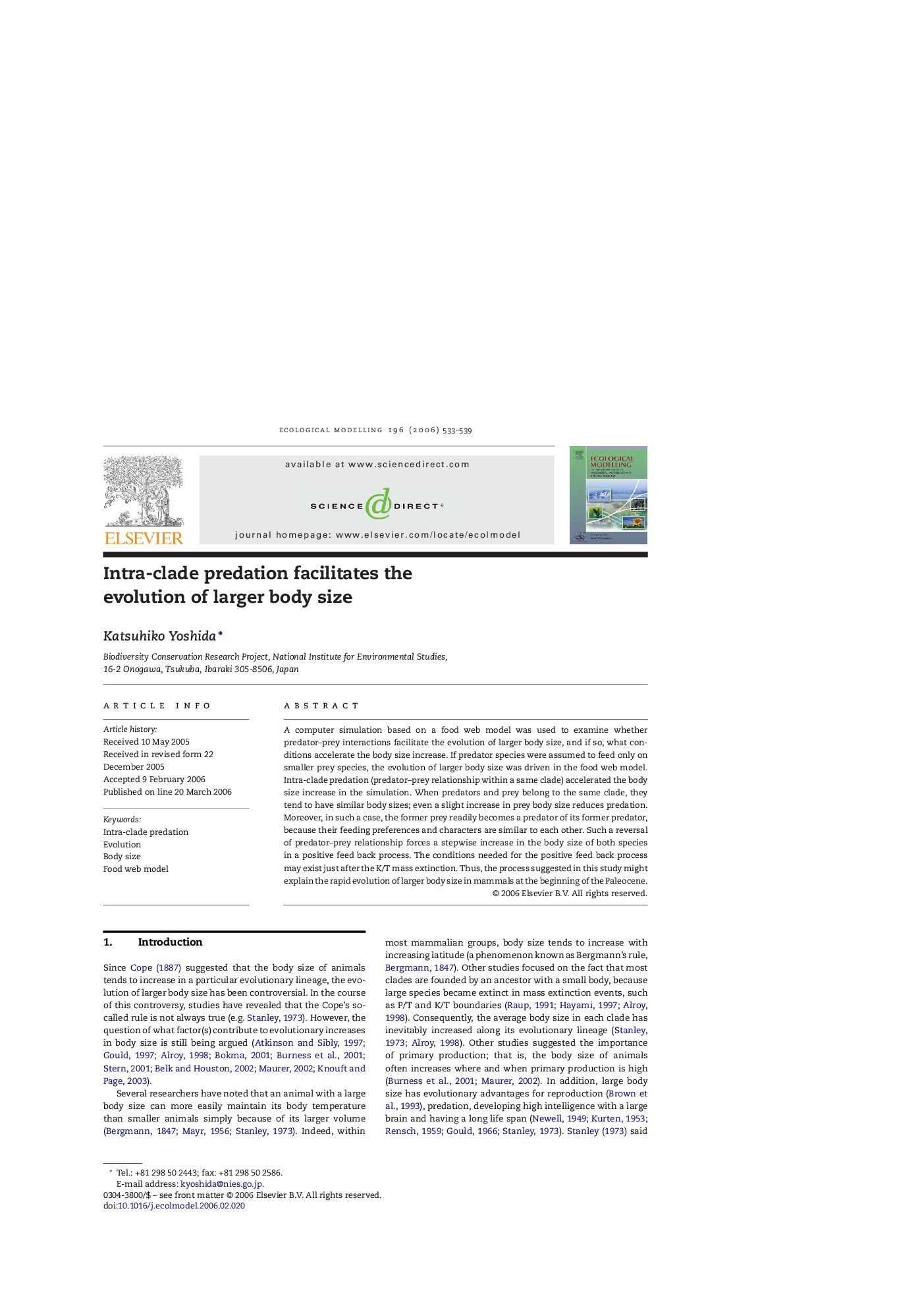| Article ID | Journal | Published Year | Pages | File Type |
|---|---|---|---|---|
| 4379169 | Ecological Modelling | 2006 | 7 Pages |
A computer simulation based on a food web model was used to examine whether predator–prey interactions facilitate the evolution of larger body size, and if so, what conditions accelerate the body size increase. If predator species were assumed to feed only on smaller prey species, the evolution of larger body size was driven in the food web model. Intra-clade predation (predator–prey relationship within a same clade) accelerated the body size increase in the simulation. When predators and prey belong to the same clade, they tend to have similar body sizes; even a slight increase in prey body size reduces predation. Moreover, in such a case, the former prey readily becomes a predator of its former predator, because their feeding preferences and characters are similar to each other. Such a reversal of predator–prey relationship forces a stepwise increase in the body size of both species in a positive feed back process. The conditions needed for the positive feed back process may exist just after the K/T mass extinction. Thus, the process suggested in this study might explain the rapid evolution of larger body size in mammals at the beginning of the Paleocene.
